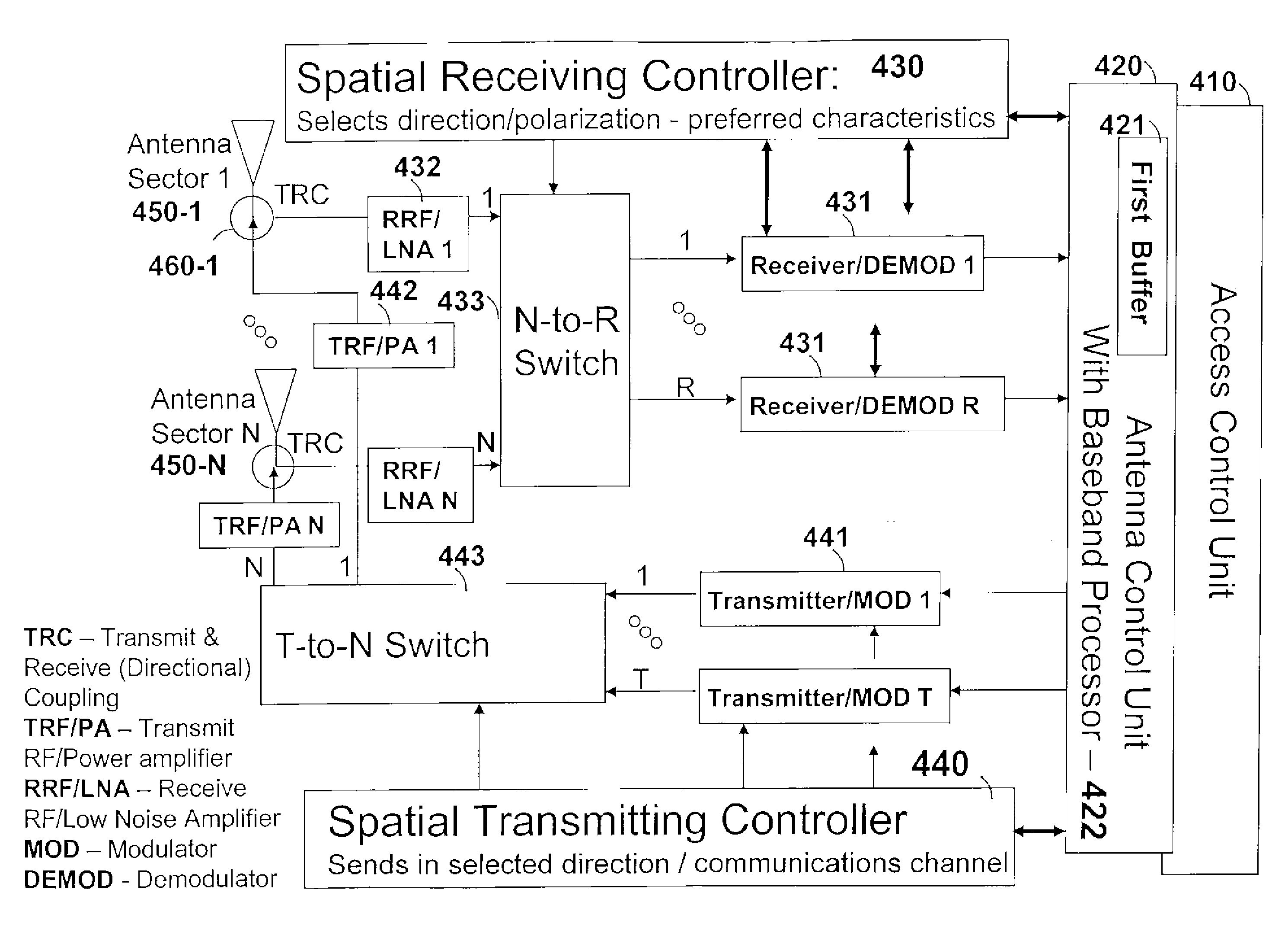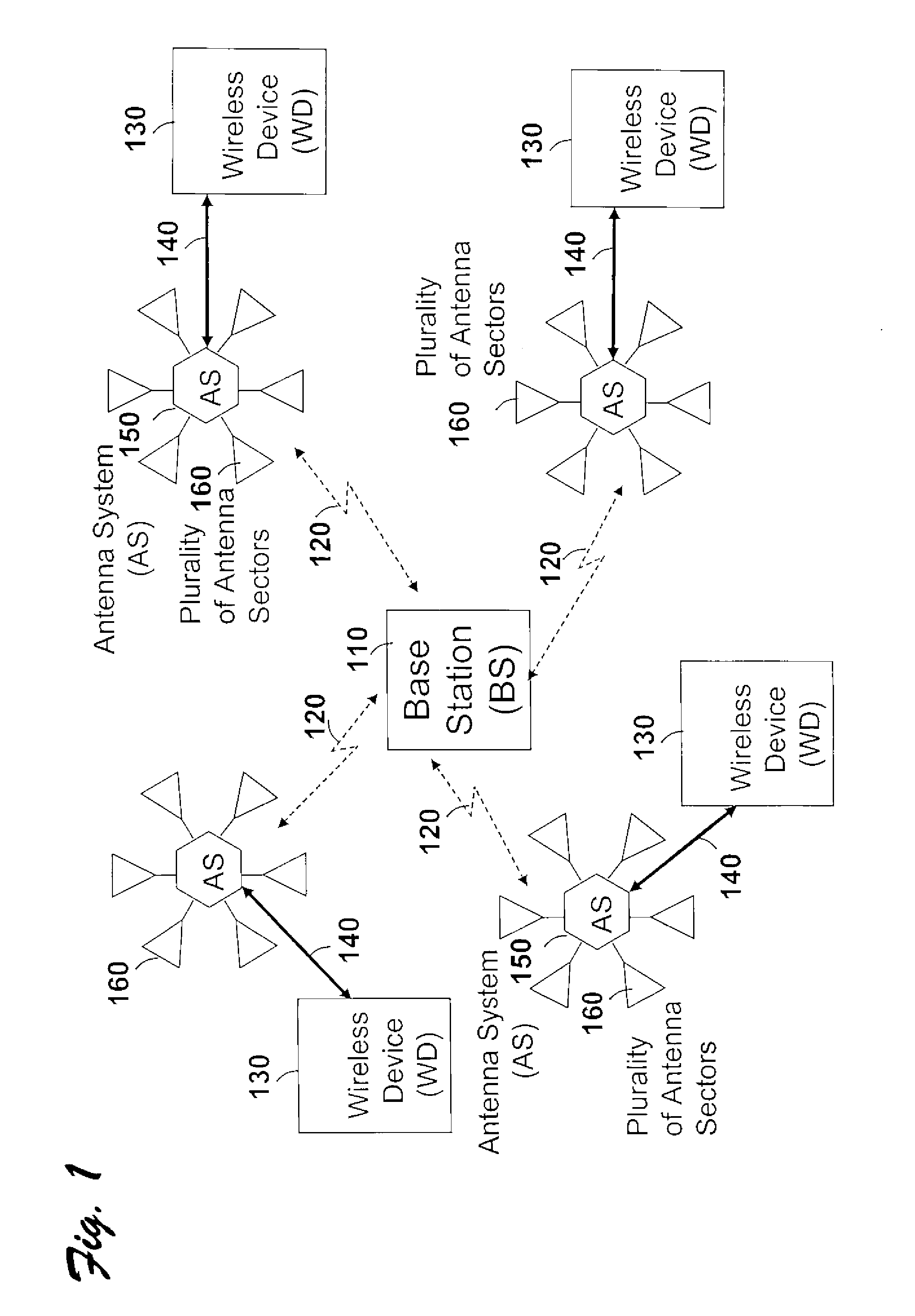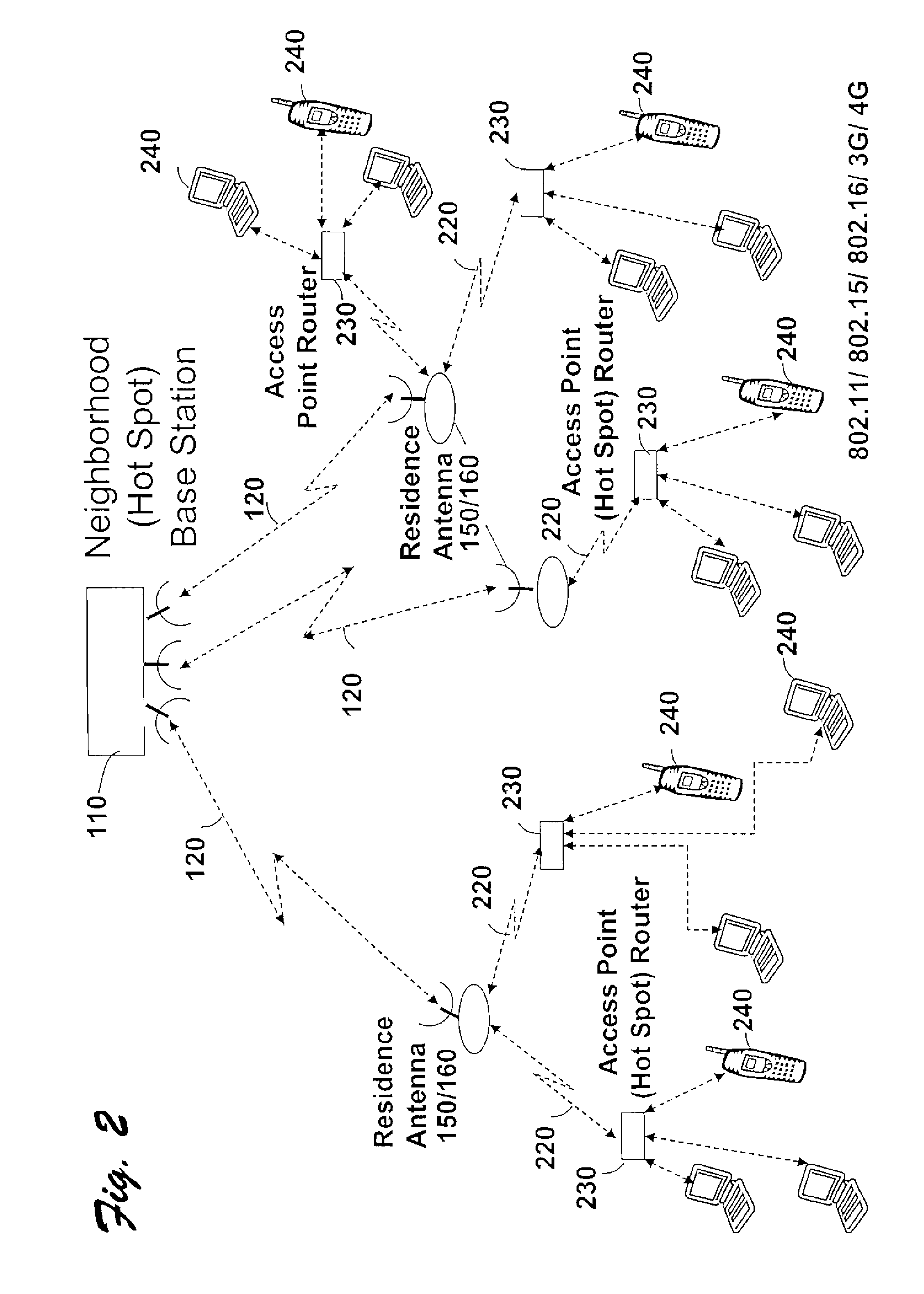Directional antenna sectoring system and methodology
a sectoring system and antenna technology, applied in the field of directional antenna sectoring system and methodology, can solve the problems of radio receiver primary source of noise and distortion, radio receiver signal strength change drastically, and may fall below the noise floor, so as to increase the bit rate of each transmission and aggregate capacity of the wireless system, the effect of minimizing interference signals
- Summary
- Abstract
- Description
- Claims
- Application Information
AI Technical Summary
Benefits of technology
Problems solved by technology
Method used
Image
Examples
Embodiment Construction
[0061]While this invention is susceptible of embodiment in many different forms, there are shown in the drawings, and will be described herein in detail, specific embodiments thereof with the understanding that the present disclosure is to be considered an exemplification of the principles of the invention and is not intended to limit the invention to the specific embodiments illustrated.
[0062]The present invention relates to a method and system for increasing transmission capacity of wireless networks.
[0063]General Description
[0064]The following are some acronyms used in this preferred embodiment description:[0065]TRC—Transmit / Receive (Directional) Coupling[0066]TRF / PA—Transmit RF (Radio Frequency) / Power Amplifier[0067]RRF / LNA—Receive RF (Radio Frequency) / Low Noise Amplifier[0068]MOD—Modulator[0069]DEMOD—Demodulator[0070]WL—wireless
[0071]FIG. 1 and FIG. 2 are general descriptions of the present invention. As shown in FIG. 1, the base station (BS) 110 communicates by means of wirele...
PUM
 Login to View More
Login to View More Abstract
Description
Claims
Application Information
 Login to View More
Login to View More - R&D
- Intellectual Property
- Life Sciences
- Materials
- Tech Scout
- Unparalleled Data Quality
- Higher Quality Content
- 60% Fewer Hallucinations
Browse by: Latest US Patents, China's latest patents, Technical Efficacy Thesaurus, Application Domain, Technology Topic, Popular Technical Reports.
© 2025 PatSnap. All rights reserved.Legal|Privacy policy|Modern Slavery Act Transparency Statement|Sitemap|About US| Contact US: help@patsnap.com



